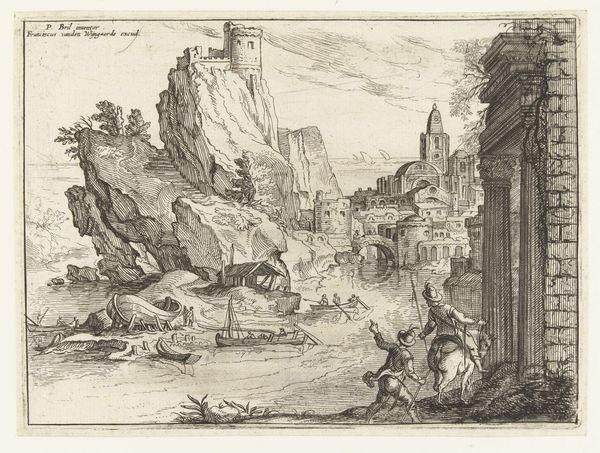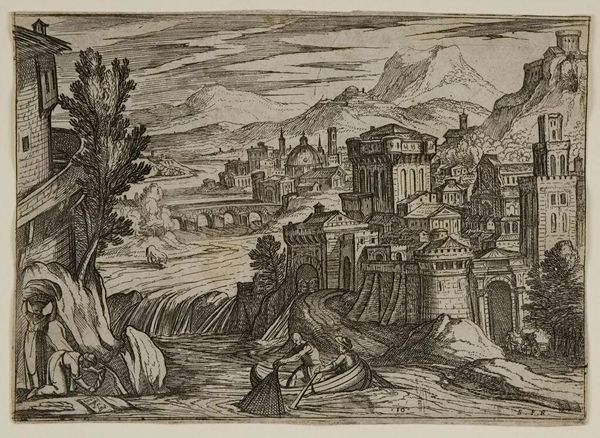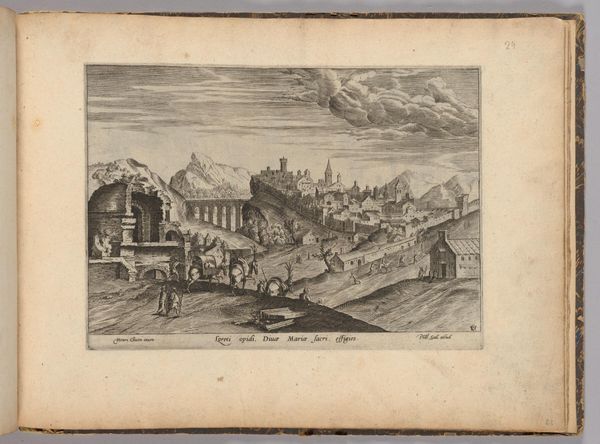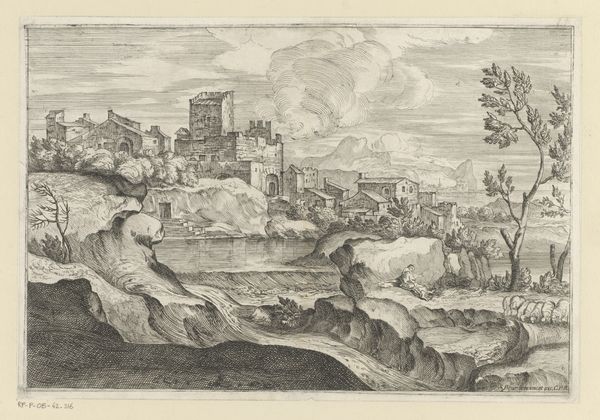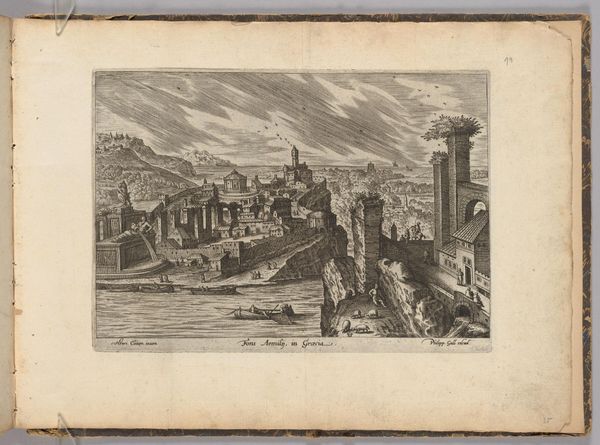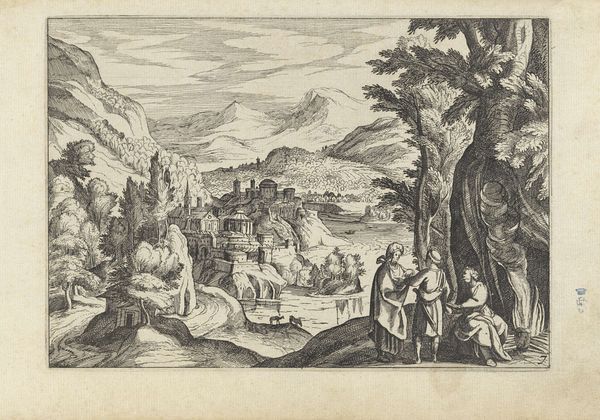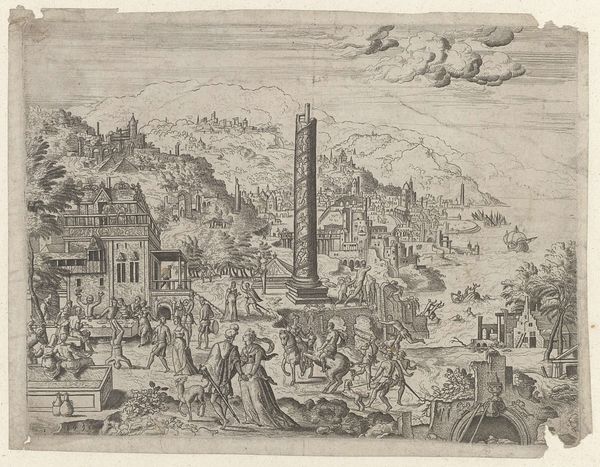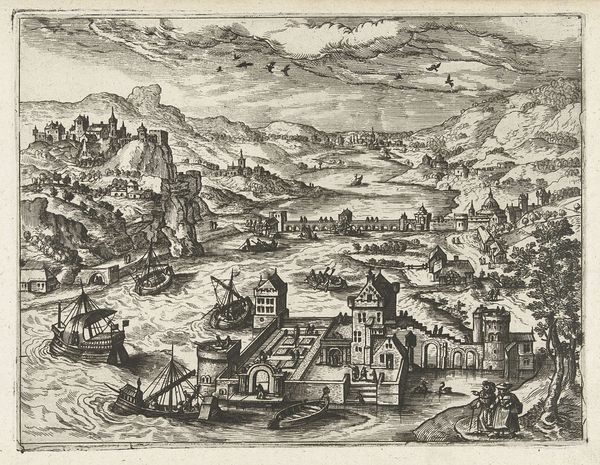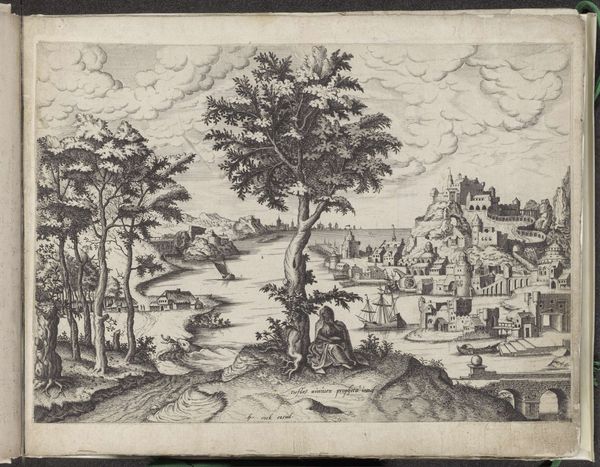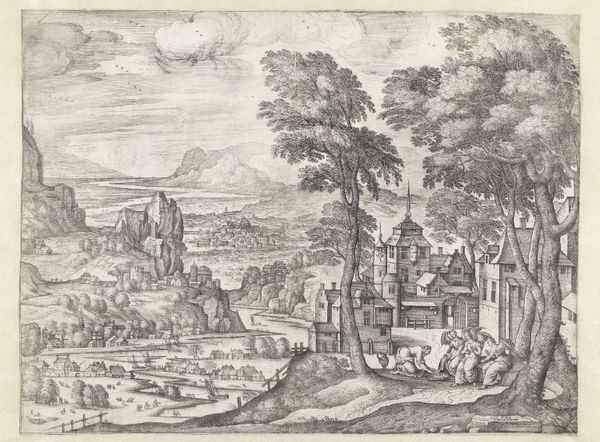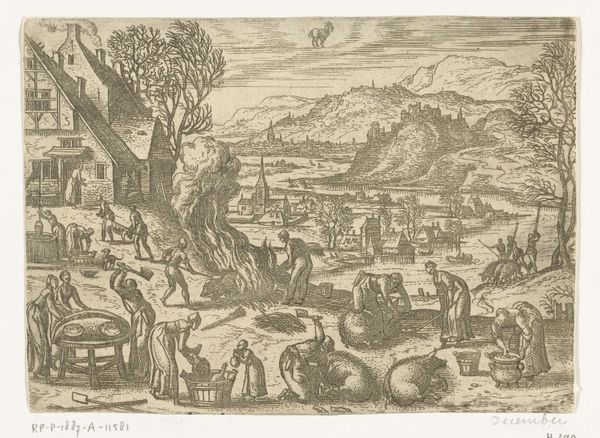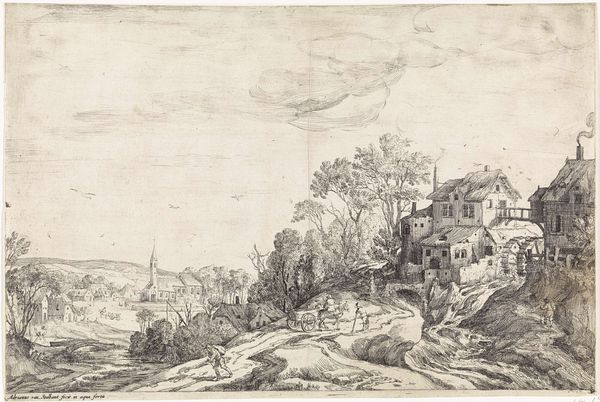
drawing, etching, paper, ink
#
drawing
#
narrative-art
#
baroque
#
pen sketch
#
etching
#
pencil sketch
#
landscape
#
river
#
figuration
#
paper
#
ink
#
cityscape
Dimensions: height 126 mm, width 170 mm
Copyright: Rijks Museum: Open Domain
Curator: Oh, my. What a gorgeously moody cityscape! I am instantly drawn in. It’s like peering into a dream of ancient times. Editor: That's a good way to describe it. What we are looking at is "Stad aan een rivier," which translates to "City on a River." Created sometime between 1612 and 1652, this work comes to us anonymously. It’s an etching, utilizing ink on paper. You feel the Baroque influence in the details. Curator: Absolutely! I feel the pen strokes pulling me toward the narrative like a quiet force. I can imagine myself sitting on the bank, just observing. A couple seems to cross on a boat... almost spectral. What a sensation! Editor: The artist offers us more than just visual charm. Think about urban centers in that era: their economic power rested on rivers like the one depicted, used for trade and transport. See how the city emerges organically from the hills and rocky structures; it seems to become an almost mythical place, inseparable from its natural foundations. Curator: I like that interpretation. To me, it evokes the interconnectedness of life. A sense that time has witnessed countless such crossings. What stories do these waters hold? Are the figures hopeful travelers, or refugees forced to leave their homes? The image almost aches with melancholy, a quiet knowing of life's transience. Editor: That transience, I would argue, ties directly to Baroque sensibilities. A period defined by upheaval, religious reformation, scientific revolution, and emergent capitalism all shook up established hierarchies, and what emerged was an artistic expression emphasizing temporality and emotional intensity. It’s important to acknowledge, though, the power dynamics that inevitably permeate these cityscapes. Who held power? Who toiled? Even anonymous art contains encoded socio-economic information that must be recognized. Curator: Point taken, definitely. Though it is somewhat sobering, acknowledging this truth alongside the image's mysterious charm actually adds a layer of resonance, don’t you think? Editor: Precisely. Analyzing works such as this—acknowledging its formal mastery as much as its implicit reflection on social structure—allows the past to be, in a sense, critically alive. Curator: Well said. For me, this quiet little etching reminds me that beauty and meaning can reside in both the grandeur of history and the gentle, human moments found floating on life's ever-flowing river.
Comments
No comments
Be the first to comment and join the conversation on the ultimate creative platform.
